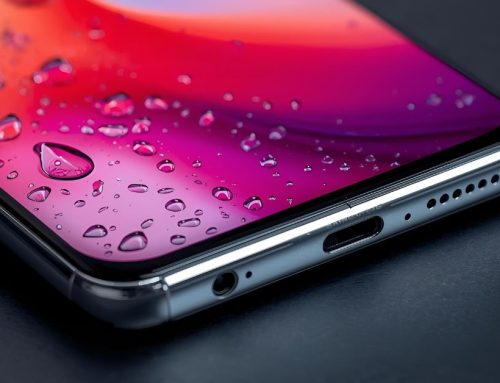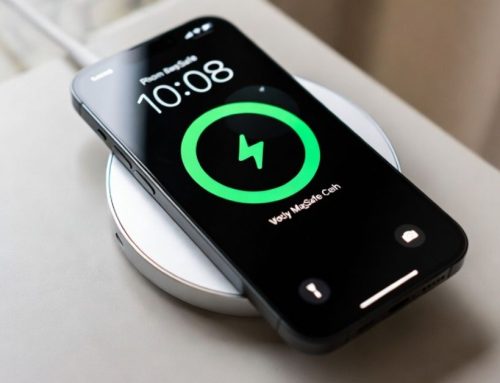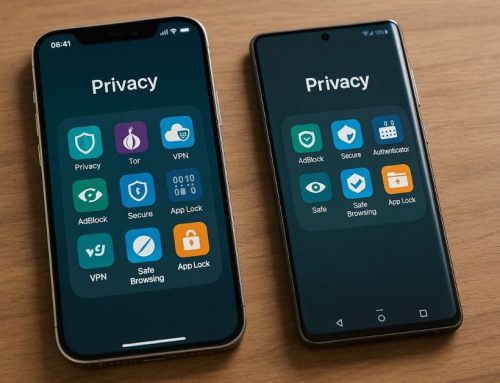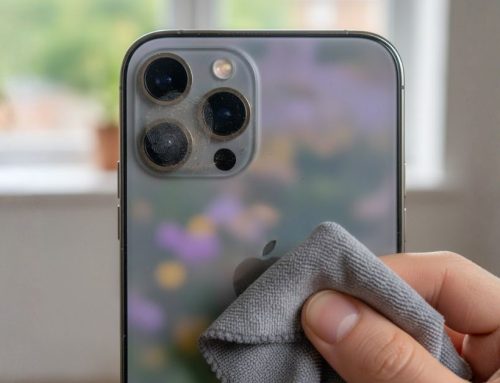Phishing scams on smartphones are becoming increasingly sophisticated, targeting users through emails, texts, and fake websites designed to steal personal information. To stay protected, learn to identify common red flags—like suspicious links, urgent messages, and unfamiliar senders. Always verify the source before clicking or sharing sensitive data, and enable two-factor authentication for extra security. Keeping your smartphone updated and reporting suspicious activity are key steps in defending against these evolving threats. Stay informed about new phishing techniques and be proactive in safeguarding your personal information to avoid falling victim to these scams.
Understanding Phishing Scams

Phishing scams on smartphones use deceptive tactics to trick users into revealing sensitive information, such as usernames, passwords, and financial details. Understanding the psychology behind these phishing attacks is crucial. Scammers exploit emotions like fear, urgency, and trust through social engineering. By impersonating trusted organisations, they create convincing scenarios to deceive individuals. Recognising these manipulative techniques will help you stay vigilant and avoid falling victim to these increasingly sophisticated phishing scams.
Types of Phishing Scams on Smartphones

To protect yourself from phishing scams on smartphones, it’s essential to recognise the common methods scammers use. Knowing how to identify fake messages and the preventive measures required to safeguard your information can help you avoid these traps. Stay informed to outsmart cybercriminals and keep your data secure.
Common Phishing Methods on Smartphones
Awareness of the various phishing methods is key to preventing phishing scams on smartphones. With alarming phishing statistics on the rise, email phishing is still one of the most common forms of attack. Spear phishing targets specific individuals, while smishing uses SMS messages to lure victims. Vishing involves deceptive phone calls, and pharming redirects users to fake websites. Stay vigilant against these tactics to protect your mobile device and personal data.
Identifying Fake Messages
Spotting a phishing scam often starts with recognising common red flags in suspicious messages. Watch out for:
- Generic greetings
- Spelling or grammatical errors
- Urgent requests for sensitive information
These tactics often accompany fake news or malicious sites designed to steal your data. Stay vigilant to protect your personal information.
Preventive Measures Agains Phishing Scams
Phishing scams on smartphones come in many forms. Understanding the unique characteristics of each can help you stay protected. Enhance your user education by learning to recognise email phishing, smishing, vishing, spear phishing, and pharming. Building phishing awareness is crucial: always verify suspicious messages, avoid clicking on unknown links, and never share sensitive information over the phone. Stay vigilant to maintain your smartphone security.
Email Phishing on Smartphones

Recognising phishing emails is your first line of defence against phishing scams on smartphones. Always verify the authenticity of the sender and avoid clicking on suspicious links. Pay close attention to details and stay cautious to protect yourself from falling victim to these scams.
Recognizing Fake Emails
To recognise fake emails, pay attention to generic greetings and spelling errors, as these are common indicators of phishing scams. Look out for these email red flags:
- Generic greetings like ‘Dear Customer’
- Spelling and grammatical errors
- Links that don’t match the visible text
These phishing indicators can help you spot and avoid malicious emails.
Verifying Sender Authenticity
Checking the sender’s email address for discrepancies or unusual domains is crucial in verifying authenticity and avoiding phishing scams on smartphones. Phishing emails often mimic legitimate addresses with slight variations. Use email verification tools to check the sender’s legitimacy and watch for red flags like generic greetings such as ‘Dear Customer.’ These tools help identify fraudulent emails and protect your mobile from phishing attacks.
Avoiding Malicious Links
Hover over links in emails to see their actual URLs and verify they don’t lead to malicious sites. Ensure link safety by following these steps:
- Preview URLs for suspicious domains
- Be wary of shortened links
- Check for minor discrepancies in the sender’s email address
Practising URL verification can greatly reduce the risk of falling for phishing scams.
Smishing and Vishing: Phishing Scams on Smartphones
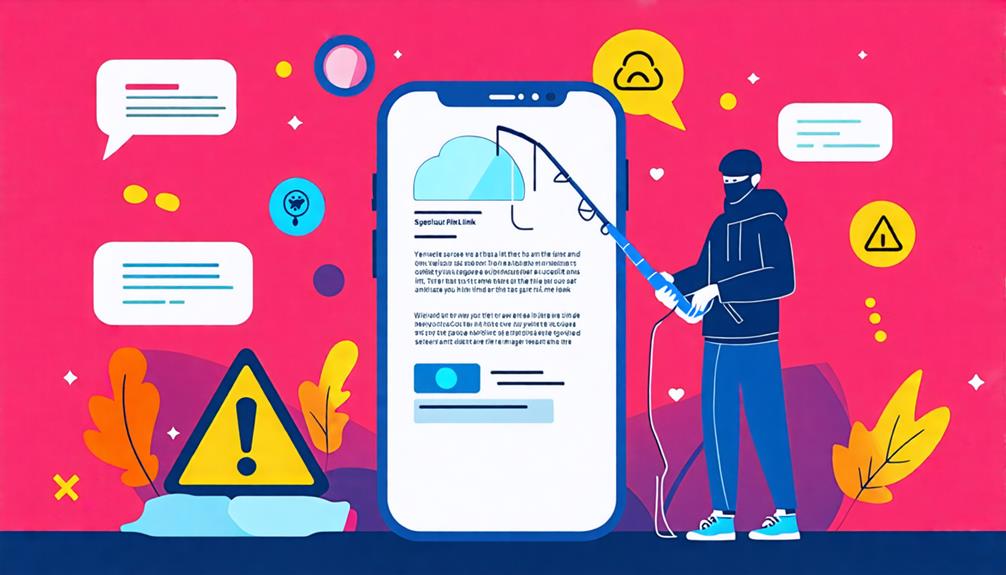
Smishing and vishing are significant threats to smartphone security, exploiting unsuspecting individuals through deceptive text messages and phone calls. Smishing typically involves malicious links or prompts to disclose personal information, while vishing uses high-pressure phone calls to extract sensitive data. Always verify the legitimacy of requests and avoid engaging with unsolicited messages or phone calls to protect your information from phishing scams.
Identifying Phishing Attempts

Recognising phishing attempts is essential for protecting your personal information on your smartphone. Phishing psychology and social engineering tactics often include:
- Generic greetings like ‘Dear Customer’
- Spelling and grammatical errors
- Slight discrepancies in email addresses or phone numbers
Stay vigilant and always verify the source before taking any action to avoid falling victim to these scams.
Safe Browsing Practices

To enhance your online security and avoid phishing scams on smartphones, always enable two-factor authentication (2FA) on your accounts. This simple step adds an extra layer of protection against unauthorised access. Additionally, using reputable security apps can help detect and block potential phishing threats and malware on your devices.
Enable Two-Factor Authentication
Enabling two-factor authentication (2FA) on your accounts greatly enhances your online security by requiring an additional verification step.
- Two factor benefits: Protects against phishing attacks.
- Authenticator apps: Offer secure mobile verification.
- Security layers: Adds robust account protection.
Use Reputable Security Apps
Using reputable security apps on your smartphone is essential for safeguarding against phishing scams. These apps offer important security features like real-time threat detection and safe browsing modes, alerting you to suspicious links. Regular app updates are critical to benefit from the latest malware definitions and security patches. Always make sure your security app is up-to-date to stay protected from evolving phishing tactics.
Handling Suspicious Messages
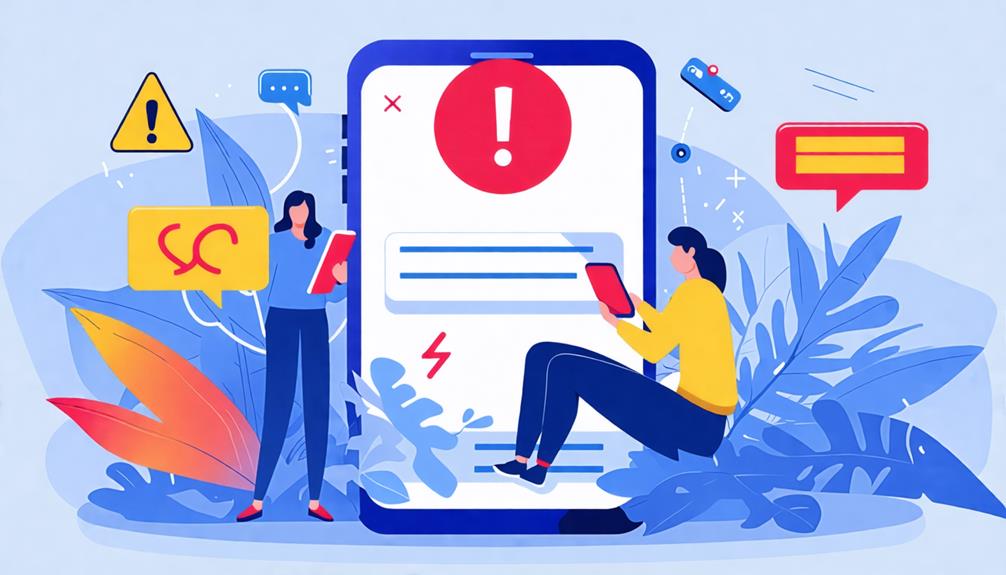
Before responding to any message, scrutinise the sender’s contact information carefully, as phishing attempts often come from unfamiliar or slightly altered email addresses and phone numbers. Be cautious of:
- Unsolicited messages that use urgency tactics.
- Links or attachments without proper message verification.
- Hovering over links to check the actual URL.
Verifying Sources

After identifying suspicious messages, it’s essential to verify the sources of any communication before taking further action. Check the sender’s phone number or email against official sources for source credibility. Use official apps or websites for account access. Confirm urgent requests by contacting the organisation directly through verified channels. This guarantees you achieve official verification and avoid phishing traps.
Enhancing Mobile Security

Regularly updating your smartphone’s operating system and apps is essential for patching vulnerabilities that phishing scams and malware could exploit. To enhance mobile app security and secure password management:
- Use strong, unique passwords for each account.
- Enable two-factor authentication (2FA) where available.
- Be cautious with public Wi-Fi; use a VPN.
Reporting Phishing Scams

Reporting phishing scams promptly can protect your personal information and help safeguard the wider community from cyber threats. Notify your email provider or mobile carrier immediately if you suspect a phishing attempt. If your financial details have been compromised, contact your bank or financial institution right away. Additionally, file complaints with agencies like the ACCC or ACSC to aid in the investigation and prevention of phishing scams. Sharing your experiences can raise awareness and prevent others from falling victim to similar scams. Reporting phishing scams on smartphones plays a key role in combating these digital threats.
Final Thoughts
Staying safe from phishing scams on smartphones requires constant vigilance and caution. Always verify the source of messages, avoid clicking on suspicious links, and never provide personal information without confirmation. Protect your mobile security with regular software updates and antivirus apps. If you encounter a phishing attempt, report it promptly to prevent further damage. By staying informed and proactive, you can protect your personal information and ensure that phishing scams on smartphones are less likely to succeed. Stay smart, stay secure!
Frequently Asked Questions
1. What is a phishing scam?
A phishing scam is a fraudulent attempt to acquire sensitive personal information such as passwords, financial data, or social security numbers by pretending to be a legitimate organization.
2. How can I recognise a phishing attempt on my mobile device?
Phishing attempts on smartphones typically come in the form of emails, text messages, or pop-ups. Look for warning signs like suspicious email addresses, unexpected requests, or links that don’t lead to legitimate websites.
3. What steps can I take to avoid phishing scams on my mobile device?
To protect yourself from phishing scams on smartphones, always be wary of unsolicited messages, never click on unknown links or download attachments from untrusted sources, and never share personal or financial information with strangers.
4. How do scammers use social engineering schemes in phishing attacks?
Phishing scams often rely on social engineering tactics where scammers are exploiting psychological manipulation, such as urgency or trust, to trick you into disclosing sensitive information. These scams can appear very convincing, often posing as reputable companies or institutions.
5. What should I do if I suspect a phishing attempt on my mobile device?
If you suspect a phishing attempt, do not engage with the message or link. Instead, report phishing attempts to the appropriate authorities or the legitimate company being impersonated, such as your mobile carrier, bank, or a trusted agency.

